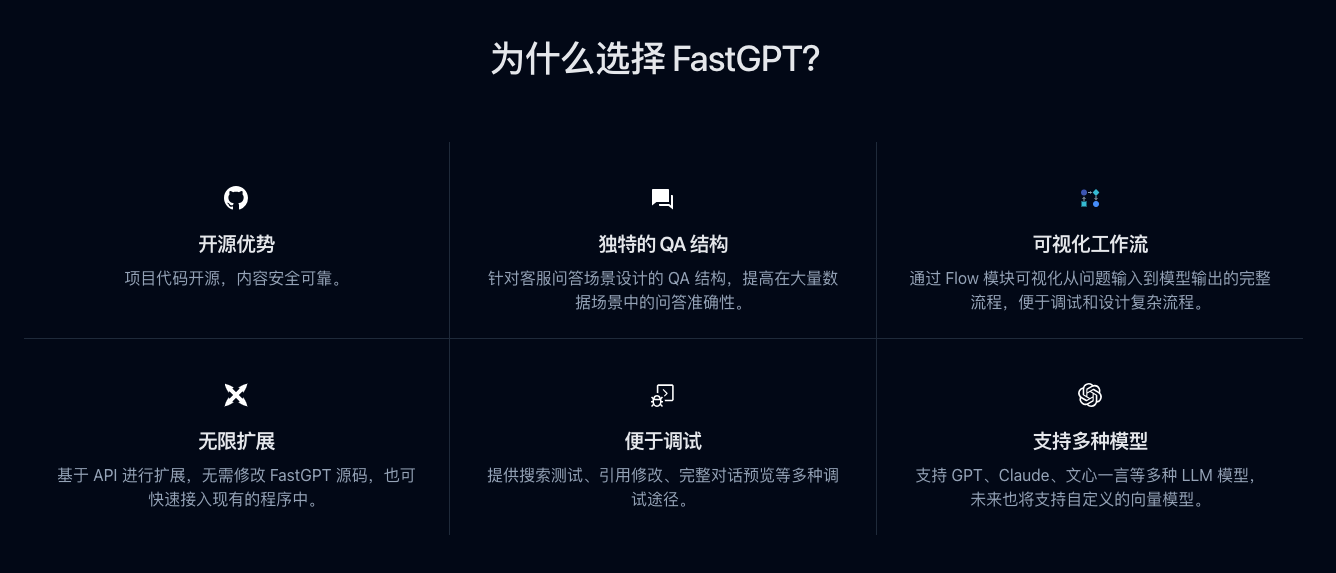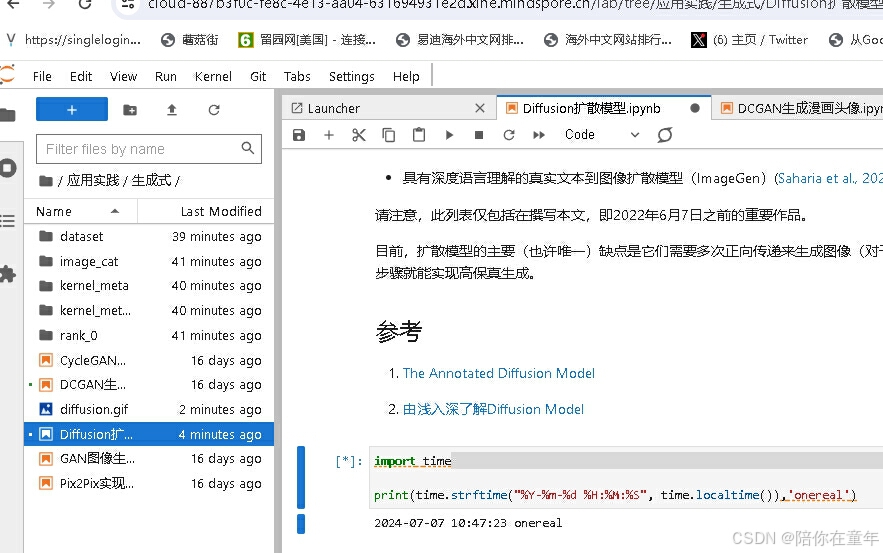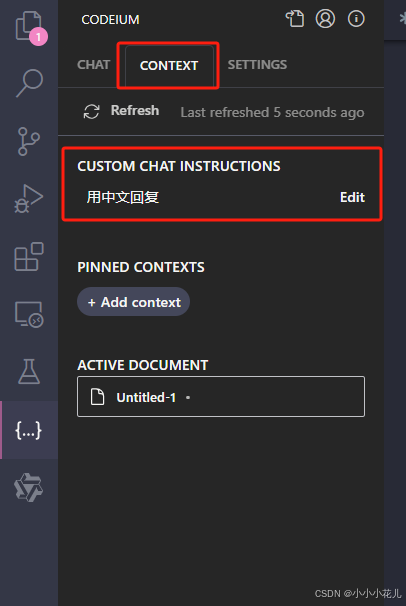内核对象基类object
这个基类是内核所有对象的基类
在rt-thread/include/rtdef.h文件里有对内核对象基类object的定义
/**
* Base structure of Kernel object
*/
struct rt_object
{
char name[RT_NAME_MAX]; /**< name of kernel object */
rt_uint8_t type; /**< type of kernel object */
rt_uint8_t flag; /**< flag of kernel object */
#ifdef RT_USING_MODULE
void *module_id; /**< id of application module */
#endif
rt_list_t list; /**< list node of kernel object */
};
typedef struct rt_object *rt_object_t; /**< Type for kernel objects. */
object属性有 内核对象名字 , 内核对象类型 , 内核对象标志,还有一个链表节点。
内核对象信息结构体
/**
* The information of the kernel object
*/
struct rt_object_information
{
enum rt_object_class_type type; /**< object class type */
rt_list_t object_list; /**< object list */
rt_size_t object_size; /**< object size */
};
其中rt_object_class_type是一个枚举类型,定义如下
/**
* The object type can be one of the follows with specific
* macros enabled:
* - Thread
* - Semaphore
* - Mutex
* - Event
* - MailBox
* - MessageQueue
* - MemHeap
* - MemPool
* - Device
* - Timer
* - Module
* - Unknown
* - Static
*/
enum rt_object_class_type
{
RT_Object_Class_Null = 0x00, /**< The object is not used. */
RT_Object_Class_Thread = 0x01, /**< The object is a thread. */
RT_Object_Class_Semaphore = 0x02, /**< The object is a semaphore. */
RT_Object_Class_Mutex = 0x03, /**< The object is a mutex. */
RT_Object_Class_Event = 0x04, /**< The object is a event. */
RT_Object_Class_MailBox = 0x05, /**< The object is a mail box. */
RT_Object_Class_MessageQueue = 0x06, /**< The object is a message queue. */
RT_Object_Class_MemHeap = 0x07, /**< The object is a memory heap. */
RT_Object_Class_MemPool = 0x08, /**< The object is a memory pool. */
RT_Object_Class_Device = 0x09, /**< The object is a device. */
RT_Object_Class_Timer = 0x0a, /**< The object is a timer. */
RT_Object_Class_Module = 0x0b, /**< The object is a module. */
RT_Object_Class_Memory = 0x0c, /**< The object is a memory. */
RT_Object_Class_Unknown = 0x0e, /**< The object is unknown. */
RT_Object_Class_Static = 0x80 /**< The object is a static object. */
};
有我们常见的线程,信号量等等,最后一个静态类型 就是 第一位 置1。
这里我们只关注 设备类 ,也就是 RT_Object_Class_Device
它们之间具体是个什么关系呢
具体我们来看rt-thread/src/object.c文件
对象容器
对象容器就是一个rt_object_information类型的数组,数组名_object_container,数组长度为RT_Object_Info_Unknown,这个数组中的每个值都是rt_object_information类型。
static struct rt_object_information _object_container[RT_Object_Info_Unknown] =
{
/* initialize object container - thread */
{RT_Object_Class_Thread, _OBJ_CONTAINER_LIST_INIT(RT_Object_Info_Thread), sizeof(struct rt_thread)},
#ifdef RT_USING_SEMAPHORE
/* initialize object container - semaphore */
{RT_Object_Class_Semaphore, _OBJ_CONTAINER_LIST_INIT(RT_Object_Info_Semaphore), sizeof(struct rt_semaphore)},
#endif
#ifdef RT_USING_MUTEX
/* initialize object container - mutex */
{RT_Object_Class_Mutex, _OBJ_CONTAINER_LIST_INIT(RT_Object_Info_Mutex), sizeof(struct rt_mutex)},
#endif
#ifdef RT_USING_EVENT
/* initialize object container - event */
{RT_Object_Class_Event, _OBJ_CONTAINER_LIST_INIT(RT_Object_Info_Event), sizeof(struct rt_event)},
#endif
#ifdef RT_USING_MAILBOX
/* initialize object container - mailbox */
{RT_Object_Class_MailBox, _OBJ_CONTAINER_LIST_INIT(RT_Object_Info_MailBox), sizeof(struct rt_mailbox)},
#endif
#ifdef RT_USING_MESSAGEQUEUE
/* initialize object container - message queue */
{RT_Object_Class_MessageQueue, _OBJ_CONTAINER_LIST_INIT(RT_Object_Info_MessageQueue), sizeof(struct rt_messagequeue)},
#endif
#ifdef RT_USING_MEMHEAP
/* initialize object container - memory heap */
{RT_Object_Class_MemHeap, _OBJ_CONTAINER_LIST_INIT(RT_Object_Info_MemHeap), sizeof(struct rt_memheap)},
#endif
#ifdef RT_USING_MEMPOOL
/* initialize object container - memory pool */
{RT_Object_Class_MemPool, _OBJ_CONTAINER_LIST_INIT(RT_Object_Info_MemPool), sizeof(struct rt_mempool)},
#endif
#ifdef RT_USING_DEVICE
/* initialize object container - device */
{RT_Object_Class_Device, _OBJ_CONTAINER_LIST_INIT(RT_Object_Info_Device), sizeof(struct rt_device)},
#endif
/* initialize object container - timer */
{RT_Object_Class_Timer, _OBJ_CONTAINER_LIST_INIT(RT_Object_Info_Timer), sizeof(struct rt_timer)},
#ifdef RT_USING_MODULE
/* initialize object container - module */
{RT_Object_Class_Module, _OBJ_CONTAINER_LIST_INIT(RT_Object_Info_Module), sizeof(struct rt_dlmodule)},
#endif
#ifdef RT_USING_HEAP
/* initialize object container - small memory */
{RT_Object_Class_Memory, _OBJ_CONTAINER_LIST_INIT(RT_Object_Info_Memory), sizeof(struct rt_memory)},
#endif
};
这个容器(数组)到底有多大呢,也就是RT_Object_Info_Unknown为几呢?
还是在object.c文件中有一个枚举类型定义rt_object_info_type我们来看一下它。
/*
* define object_info for the number of _object_container items.
*/
enum rt_object_info_type
{
RT_Object_Info_Thread = 0, /**< The object is a thread. */
#ifdef RT_USING_SEMAPHORE
RT_Object_Info_Semaphore, /**< The object is a semaphore. */
#endif
#ifdef RT_USING_MUTEX
RT_Object_Info_Mutex, /**< The object is a mutex. */
#endif
#ifdef RT_USING_EVENT
RT_Object_Info_Event, /**< The object is a event. */
#endif
#ifdef RT_USING_MAILBOX
RT_Object_Info_MailBox, /**< The object is a mail box. */
#endif
#ifdef RT_USING_MESSAGEQUEUE
RT_Object_Info_MessageQueue, /**< The object is a message queue. */
#endif
#ifdef RT_USING_MEMHEAP
RT_Object_Info_MemHeap, /**< The object is a memory heap */
#endif
#ifdef RT_USING_MEMPOOL
RT_Object_Info_MemPool, /**< The object is a memory pool. */
#endif
#ifdef RT_USING_DEVICE
RT_Object_Info_Device, /**< The object is a device */
#endif
RT_Object_Info_Timer, /**< The object is a timer. */
#ifdef RT_USING_MODULE
RT_Object_Info_Module, /**< The object is a module. */
#endif
#ifdef RT_USING_HEAP
RT_Object_Info_Memory, /**< The object is a memory. */
#endif
RT_Object_Info_Unknown, /**< The object is unknown. */
};
可以看到是由宏定义决定的,宏定义在rtconfig.h文件中。
在这个枚举类型中RT_Object_Info_Thread,RT_Object_Info_Timer,RT_Object_Info_Unknown, 是必然有的。而且RT_Object_Info_Unknown放在最后一个位置。
那么我们现在定义了RT_USING_DEVICE,开启设备类。那么这个枚举类型中一共有四个元素,所以RT_Object_Info_Unknown = 3。
然后 对象容器的长度 就也为3 。里面分别有线程,定时器,还有设备的对象信息rt_object_information。
这个容器直接进行了初试化,每个元素的第二个成员也就是链表通过宏,指向本身进行初始化,也就是这个链表头(哨卫)前后都指向本身。这个链表用来链接同类的对象,后面会学习到。
#define _OBJ_CONTAINER_LIST_INIT(c) \
{&(_object_container[c].object_list), &(_object_container[c].object_list)}
内核对象函数
rt_object_get_information
/**
* @brief This function will return the specified type of object information.
*
* @param type is the type of object, which can be
* RT_Object_Class_Thread/Semaphore/Mutex... etc
*
* @return the object type information or RT_NULL
*/
struct rt_object_information *
rt_object_get_information(enum rt_object_class_type type)
{
int index;
for (index = 0; index < RT_Object_Info_Unknown; index ++)
if (_object_container[index].type == type) return &_object_container[index];
return RT_NULL;
}
这个函数用于获取对象的类型信息,输入值是rt_object_class_type ,返回值是rt_object_information 指针。它们俩的关系是rt_object_class_type 是rt_object_information 的第一个成员。也就是说通过类型来获取这个类型的对象的具体信息(后面为了要链表)。
它是咋实现的呢。
通过遍历对象容器_object_container来实现。
rt_object_get_length
/**
* @brief This function will return the length of object list in object container.
*
* @param type is the type of object, which can be
* RT_Object_Class_Thread/Semaphore/Mutex... etc
*
* @return the length of object list
*/
int rt_object_get_length(enum rt_object_class_type type)
{
int count = 0;
rt_ubase_t level;
struct rt_list_node *node = RT_NULL;
struct rt_object_information *information = RT_NULL;
information = rt_object_get_information((enum rt_object_class_type)type);
if (information == RT_NULL) return 0;
level = rt_hw_interrupt_disable();
/* get the count of objects */
rt_list_for_each(node, &(information->object_list))
{
count ++;
}
rt_hw_interrupt_enable(level);
return count;
}
这个函数用于获取对象链表的长度,输入值是rt_object_class_type ,也就是哪一类对象,然后获取这类对象上的链表链接的长度。
rt_list_for_each是一个宏,用来遍历链表。
/**
* rt_list_for_each - iterate over a list
* @pos: the rt_list_t * to use as a loop cursor.
* @head: the head for your list.
*/
#define rt_list_for_each(pos, head) \
for (pos = (head)->next; pos != (head); pos = pos->next)
具体实现:先获取类型的对象信息,对象信息里有一个链表节点,这个节点是链表头(哨卫),从次开始遍历链表,从而获取链表长度,注意这个长度是不包含哨卫的。
rt_object_get_pointers
/**
* @brief This function will copy the object pointer of the specified type,
* with the maximum size specified by maxlen.
*
* @param type is the type of object, which can be
* RT_Object_Class_Thread/Semaphore/Mutex... etc
*
* @param pointers is the pointer will be saved to.
*
* @param maxlen is the maximum number of pointers can be saved.
*
* @return the copied number of object pointers.
*/
int rt_object_get_pointers(enum rt_object_class_type type, rt_object_t *pointers, int maxlen)
{
int index = 0;
rt_ubase_t level;
struct rt_object *object;
struct rt_list_node *node = RT_NULL;
struct rt_object_information *information = RT_NULL;
if (maxlen <= 0) return 0;
information = rt_object_get_information((enum rt_object_class_type)type);
if (information == RT_NULL) return 0;
level = rt_hw_interrupt_disable();
/* retrieve pointer of object */
rt_list_for_each(node, &(information->object_list))
{
object = rt_list_entry(node, struct rt_object, list);
pointers[index] = object;
index ++;
if (index >= maxlen) break;
}
rt_hw_interrupt_enable(level);
return index;
}
rt_object_init
/**
* @brief This function will initialize an object and add it to object system
* management.
*
* @param object is the specified object to be initialized.
*
* @param type is the object type.
*
* @param name is the object name. In system, the object's name must be unique.
*/
void rt_object_init(struct rt_object *object,
enum rt_object_class_type type,
const char *name)
{
register rt_base_t temp;
struct rt_list_node *node = RT_NULL;
struct rt_object_information *information;
#ifdef RT_USING_MODULE
struct rt_dlmodule *module = dlmodule_self();
#endif /* RT_USING_MODULE */
/* get object information */
information = rt_object_get_information(type);
RT_ASSERT(information != RT_NULL);
/* check object type to avoid re-initialization */
/* enter critical */
rt_enter_critical();
/* try to find object */
for (node = information->object_list.next;
node != &(information->object_list);
node = node->next)
{
struct rt_object *obj;
obj = rt_list_entry(node, struct rt_object, list);
if (obj) /* skip warning when disable debug */
{
RT_ASSERT(obj != object);
}
}
/* leave critical */
rt_exit_critical();
/* initialize object's parameters */
/* set object type to static */
object->type = type | RT_Object_Class_Static;
/* copy name */
rt_strncpy(object->name, name, RT_NAME_MAX);
RT_OBJECT_HOOK_CALL(rt_object_attach_hook, (object));
/* lock interrupt */
temp = rt_hw_interrupt_disable();
#ifdef RT_USING_MODULE
if (module)
{
rt_list_insert_after(&(module->object_list), &(object->list));
object->module_id = (void *)module;
}
else
#endif /* RT_USING_MODULE */
{
/* insert object into information object list */
rt_list_insert_after(&(information->object_list), &(object->list));
}
/* unlock interrupt */
rt_hw_interrupt_enable(temp);
}
rt_object_detach
/**
* @brief This function will detach a static object from object system,
* and the memory of static object is not freed.
*
* @param object the specified object to be detached.
*/
void rt_object_detach(rt_object_t object)
{
register rt_base_t temp;
/* object check */
RT_ASSERT(object != RT_NULL);
RT_OBJECT_HOOK_CALL(rt_object_detach_hook, (object));
/* reset object type */
object->type = 0;
/* lock interrupt */
temp = rt_hw_interrupt_disable();
/* remove from old list */
rt_list_remove(&(object->list));
/* unlock interrupt */
rt_hw_interrupt_enable(temp);
}
如果使用HEAP,#ifdef RT_USING_HEAP ,则有下面的函数rt_object_allocate和rt_object_delete
rt_object_allocate
/**
* @brief This function will allocate an object from object system.
*
* @param type is the type of object.
*
* @param name is the object name. In system, the object's name must be unique.
*
* @return object
*/
rt_object_t rt_object_allocate(enum rt_object_class_type type, const char *name)
{
struct rt_object *object;
register rt_base_t temp;
struct rt_object_information *information;
#ifdef RT_USING_MODULE
struct rt_dlmodule *module = dlmodule_self();
#endif /* RT_USING_MODULE */
RT_DEBUG_NOT_IN_INTERRUPT;
/* get object information */
information = rt_object_get_information(type);
RT_ASSERT(information != RT_NULL);
object = (struct rt_object *)RT_KERNEL_MALLOC(information->object_size);
if (object == RT_NULL)
{
/* no memory can be allocated */
return RT_NULL;
}
/* clean memory data of object */
rt_memset(object, 0x0, information->object_size);
/* initialize object's parameters */
/* set object type */
object->type = type;
/* set object flag */
object->flag = 0;
/* copy name */
rt_strncpy(object->name, name, RT_NAME_MAX);
RT_OBJECT_HOOK_CALL(rt_object_attach_hook, (object));
/* lock interrupt */
temp = rt_hw_interrupt_disable();
#ifdef RT_USING_MODULE
if (module)
{
rt_list_insert_after(&(module->object_list), &(object->list));
object->module_id = (void *)module;
}
else
#endif /* RT_USING_MODULE */
{
/* insert object into information object list */
rt_list_insert_after(&(information->object_list), &(object->list));
}
/* unlock interrupt */
rt_hw_interrupt_enable(temp);
/* return object */
return object;
}
rt_object_delete
/**
* @brief This function will delete an object and release object memory.
*
* @param object is the specified object to be deleted.
*/
void rt_object_delete(rt_object_t object)
{
register rt_base_t temp;
/* object check */
RT_ASSERT(object != RT_NULL);
RT_ASSERT(!(object->type & RT_Object_Class_Static));
RT_OBJECT_HOOK_CALL(rt_object_detach_hook, (object));
/* reset object type */
object->type = RT_Object_Class_Null;
/* lock interrupt */
temp = rt_hw_interrupt_disable();
/* remove from old list */
rt_list_remove(&(object->list));
/* unlock interrupt */
rt_hw_interrupt_enable(temp);
/* free the memory of object */
RT_KERNEL_FREE(object);
}
rt_object_is_systemobject
/**
* @brief This function will judge the object is system object or not.
*
* @note Normally, the system object is a static object and the type
* of object set to RT_Object_Class_Static.
*
* @param object is the specified object to be judged.
*
* @return RT_TRUE if a system object, RT_FALSE for others.
*/
rt_bool_t rt_object_is_systemobject(rt_object_t object)
{
/* object check */
RT_ASSERT(object != RT_NULL);
if (object->type & RT_Object_Class_Static)
return RT_TRUE;
return RT_FALSE;
}
rt_object_get_type
/**
* @brief This function will return the type of object without
* RT_Object_Class_Static flag.
*
* @param object is the specified object to be get type.
*
* @return the type of object.
*/
rt_uint8_t rt_object_get_type(rt_object_t object)
{
/* object check */
RT_ASSERT(object != RT_NULL);
return object->type & ~RT_Object_Class_Static;
}
rt_object_find
/**
* @brief This function will find specified name object from object
* container.
*
* @param name is the specified name of object.
*
* @param type is the type of object
*
* @return the found object or RT_NULL if there is no this object
* in object container.
*
* @note this function shall not be invoked in interrupt status.
*/
rt_object_t rt_object_find(const char *name, rt_uint8_t type)
{
struct rt_object *object = RT_NULL;
struct rt_list_node *node = RT_NULL;
struct rt_object_information *information = RT_NULL;
information = rt_object_get_information((enum rt_object_class_type)type);
/* parameter check */
if ((name == RT_NULL) || (information == RT_NULL)) return RT_NULL;
/* which is invoke in interrupt status */
RT_DEBUG_NOT_IN_INTERRUPT;
/* enter critical */
rt_enter_critical();
/* try to find object */
rt_list_for_each(node, &(information->object_list))
{
object = rt_list_entry(node, struct rt_object, list);
if (rt_strncmp(object->name, name, RT_NAME_MAX) == 0)
{
/* leave critical */
rt_exit_critical();
return object;
}
}
/* leave critical */
rt_exit_critical();
return RT_NULL;
}











![[护网训练]原创应急响应靶机整理集合](https://img-blog.csdnimg.cn/img_convert/addead6490df38ea7d6162ed882e3f25.jpeg)






